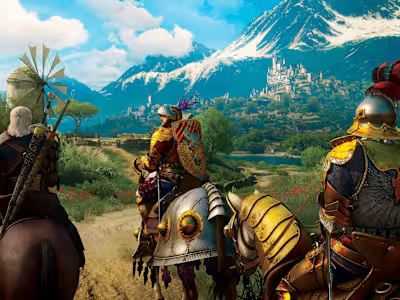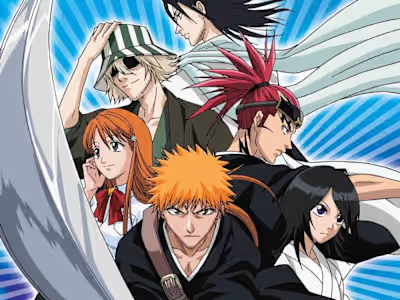Cultural References in Anime:A Window into Japan's Rich Heritage
Introduction:
Like any medium that is sprung from one country, anime heavily showcases the wide
culture of Japan. The more you watch, the more immersed you become with the
customs and are enriched with knowledge. From language nuances to ancient
traditions and modern trends, anime allows both local and global audiences to
explore the heart and soul of Japan.
1. Traditional Festivals: A cornerstone
Ever wonder why so many festivals are in almost every anime you have watched?
Japanese festivals, known as "matsuri," are a significant part of the country's culture.
Anime often features episodes or arcs centered around these celebrations, such as
Hanami (cherry blossom viewing), Tanabata (Star Festival), and Obon (a festival to
honor deceased ancestors). Tanabata and Obon take place in July and August
respectively which is when you see characters dress up in traditional clothes like
yukata and kimono. Of course this is when the famous firework scenes take place.
Hanami is an annual celebration of Sakura and springtime starting towards the end
of March and lasting until the beginning of May. Families and friends gather around
cherry blossom trees, drink and eat food as the petals gently fall from the branches
in full bloom.
2. Mythology and Folklore: Yokai, Kami, and More
Japan's rich mythology and folklore are everywhere to the point where series are
even named after them. Creatures like "yokai" (supernatural beings) and "kami"
(spirits or gods) frequently make appearances but it can get very confusing very
quickly. Each kami and yokai have their own lore. The 5 Kotoamatsukami were the
first kami and the first primordial gods, after them the Kamiyonanayo followed who
were the 7 generations of deities. Most of these gods hid so the only ones that are
relevant are Izanagi (“He Who Invites”) and Izanami (“She Who Invites”) who were
the last generation of deities. They created Japan’s landscape and bore all the other
famous gods Amaterasu goddess of the sun, Tsukuyomi god of the moon, and
Susanoo god of the sea and storm. There are a ton of stories involving these gods
who are often inspiration and act as symbolism in anime. Yokai are spirits and they
aren’t always mischievous and malevolent and are believed to reside in all things.
3. Language and Etiquette: A World of Honorifics
One of the most known aspects of Japanese culture embedded in anime is the use
of honorifics which differs a lot compared to the English language. These small
linguistic markers convey respect, hierarchy, and personal relationships. Whether it's
the "senpai-kouhai" dynamic or addressing someone as "san," "sama," or "sensei,"
honorifics are pivotal in real life and failure to use them correctly can cause problems
in the workforce which is part of some of the more negative aspects of Japanese
society. Understanding these subtleties adds depth to character relationships, and
many fans of anime find themselves picking up these linguistic nuances.
4. Culinary Delights
Food in anime is more than just sustenance; it's a culinary adventure. From
intricately designed bento boxes to ramen slurping scenes, anime showcases
Japan's gastronomic delights in a visually appealing way. Additionally, tea
ceremonies and the meticulous preparation of traditional dishes are often
highlighted, making anime a delectable introduction to Japanese cuisine. Sushi and
all other fish are of course especially famous which makes sense since Japan is an
island nation.
5. Historical Japan: Samurai, Shoguns, and Ronin
Japan's feudal past and history is very commonly depicted and is a bit of an
obsession for fans. Series like "Rurouni Kenshin" and "Samurai Champloo" pay
homage to samurai culture just to name a few, offering insights into the warrior code,
swordsmanship, and the Edo period. Even shows that aren’t in a historical setting
like “Bleach” have samurai based characters that wear the trademark attire.
6. Modern Urban Life: A Glimpse into Japan Today
Many series portray contemporary Japanese urban life, showcasing bustling cities
like Tokyo, everyday rituals, and the fusion of traditional and modern elements.
These depictions resonate with both Japanese viewers and international audiences,
providing a glimpse into the everyday experiences of modern Japan.
7. Fashion and Trends: The Style of Anime
Anime often reflects Japan's ever-evolving fashion trends. Iconic school uniforms,
cosplay culture, and streetwear are just a few examples of how anime influences and
is influenced by fashion. The characters' unique outfits become style inspirations for
fans worldwide, leading to the creation of fashion lines and trends inspired by anime.
Conclusion:
Anime is a tapestry woven with threads of Japanese culture, offering a captivating
journey through language, traditions, mythology, and contemporary life. The raw
cultural input not only enriches the viewing experience but also serves as a bridge
between Japan and the rest of the world.
Like this project
Posted Oct 2, 2023
Connecting references in Anime and explaining it's importance to Japanese culture.
Likes
0
Views
16



